Related Research Articles

Cyberpunk is a subgenre of science fiction in a dystopian futuristic setting that tends to focus on a "combination of lowlife and high tech", featuring futuristic technological and scientific achievements, such as artificial intelligence and cybernetics, juxtaposed with societal collapse, dystopia or decay. Much of cyberpunk is rooted in the New Wave science fiction movement of the 1960s and 1970s, when writers like Philip K. Dick, Michael Moorcock, Roger Zelazny, John Brunner, J. G. Ballard, Philip José Farmer and Harlan Ellison examined the impact of drug culture, technology, and the sexual revolution while avoiding the utopian tendencies of earlier science fiction.

Neuromancer is a 1984 science fiction novel by American-Canadian writer William Gibson. Considered one of the earliest and best-known works in the cyberpunk genre, it is the only novel to win the Nebula Award, the Philip K. Dick Award, and the Hugo Award. It was Gibson's debut novel and the beginning of the Sprawl trilogy. Set in the future, the novel follows Henry Case, a washed-up hacker hired for one last job, which brings him in contact with a powerful artificial intelligence.

William Ford Gibson is an American-Canadian speculative fiction writer and essayist widely credited with pioneering the science fiction subgenre known as cyberpunk. Beginning his writing career in the late 1970s, his early works were noir, near-future stories that explored the effects of technology, cybernetics, and computer networks on humans—a "combination of lowlife and high tech"—and helped to create an iconography for the information age before the ubiquity of the Internet in the 1990s. Gibson coined the term "cyberspace" for "widespread, interconnected digital technology" in his short story "Burning Chrome" (1982), and later popularized the concept in his acclaimed debut novel Neuromancer (1984). These early works of Gibson's have been credited with "renovating" science fiction literature in the 1980s.
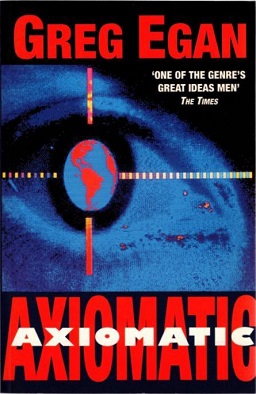
Axiomatic (ISBN 0-7528-1650-0) is a 1995 collection of short science fiction stories by Greg Egan. The stories all delve into different aspects of self and identity.

Hackers is an anthology of science fiction short stories edited by Jack Dann and Gardner Dozois. It was first published in 1996. It contains stories by science fiction and cyberpunk writers of the late 1980s and early 1990s about hackers.

Ernst Udet was a German pilot during World War I and a Luftwaffe Colonel-General (Generaloberst) during World War II.

The Light of Other Days is a 2000 science fiction novel written by Stephen Baxter based on a synopsis by Arthur C. Clarke, which explores the development of wormhole technology to the point where information can be passed instantaneously between points in the spacetime continuum.
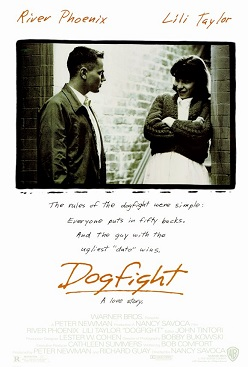
Dogfight is a 1991 period coming-of-age drama film set in San Francisco, California, during the 1960s and directed by Nancy Savoca. The film explores the love between an 18-year-old Marine, Lance Corporal Eddie Birdlace on his way to Vietnam, and a young woman, Rose Fenny.

"Johnny Mnemonic" is a science fiction short story by American-Canadian writer William Gibson. It first appeared in Omni magazine in May 1981, and was subsequently included in Burning Chrome, a 1986 collection of Gibson's short fiction. It takes place in the world of Gibson's cyberpunk novels, predating them by some years, and introduces the character Molly Millions, who plays a prominent role in the Sprawl trilogy of novels.
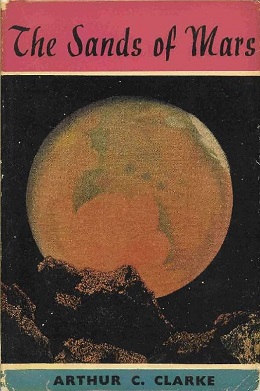
The Sands of Mars is a science fiction novel by English writer Arthur C. Clarke. While he was already popular as a short story writer and as a magazine contributor, The Sands of Mars was also a prelude to Clarke's becoming one of the world's foremost writers of science fiction novels. The story was published in 1951, before humans had achieved space flight. It is set principally on the planet Mars, which has been settled by humans and is used essentially as a research establishment. The story setting is that Mars has been surveyed but not fully explored on the ground. The Sands of Mars was Clarke's first published novel.

The Man in the Maze is a science fiction novel by American writer Robert Silverberg, originally serialized in the magazine, Worlds of If April in May 1968, and published in bookstores the following year. It tells the tale of a man rendered incapable of interacting normally with other human beings by his uncontrollable psychic abilities. The novel is inspired by Sophocles' play Philoctetes, with the roles of Odysseus, Neoptolemus and Philoctetes played by Boardman, Rawlins, and Muller, respectively.
Brain implants, often referred to as neural implants, are technological devices that connect directly to a biological subject's brain – usually placed on the surface of the brain, or attached to the brain's cortex. A common purpose of modern brain implants and the focus of much current research is establishing a biomedical prosthesis circumventing areas in the brain that have become dysfunctional after a stroke or other head injuries. This includes sensory substitution, e.g., in vision. Other brain implants are used in animal experiments simply to record brain activity for scientific reasons. Some brain implants involve creating interfaces between neural systems and computer chips. This work is part of a wider research field called brain–computer interfaces.
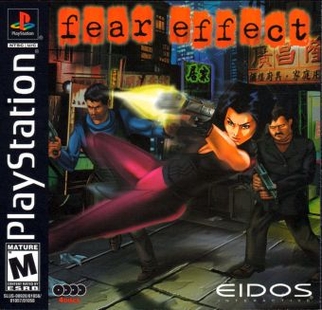
Fear Effect is an action-adventure video game developed by Kronos Digital Entertainment and published by Eidos Interactive for the PlayStation. A prequel was released one year later entitled Fear Effect 2: Retro Helix. A remake, Fear Effect Reinvented, was announced on August 21, 2017.
Prosthetics, the artificial replacement of organic limbs or organs, often play a role in fiction, particularly science fiction, as either plot points or to give a character a beyond normal appearance. Numerous works of literature, television, and films feature characters who have prosthetics attached.

Secrets Can Kill is the first of many installments in the Nancy Drew point-and-click adventure game series by Her Interactive. Players took on the first-person view of fictional amateur sleuth Nancy Drew and solved the mystery through interrogation of suspects, solving puzzles, and discovering clues. The game is animated in 3D, but unlike later games, the characters are 2D. There were three levels of gameplay, Junior, Senior, and Master detective modes, each offering a different difficulty level of puzzles and hints, however none of these changes affected the actual plot of the game. The game was loosely based on a book of the same name Secrets Can Kill (1986).
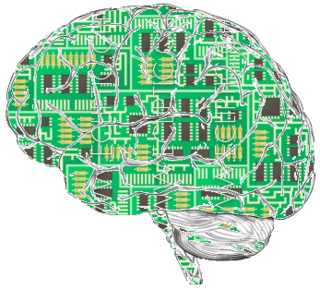
Mind uploading, whole brain emulation, or substrate-independent minds, is a use of a computer or another substrate as an emulated human brain. The term "mind transfer" also refers to a hypothetical transfer of a mind from one biological brain to another. Uploaded minds and societies of minds, often in simulated realities, are recurring themes in science-fiction novels and films since the 1950s.
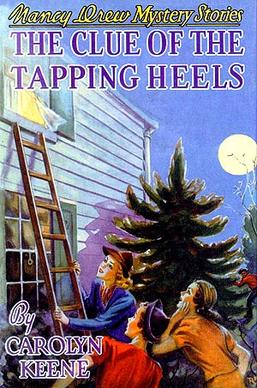
The Clue of the Tapping Heels is the 16th volume in the Nancy Drew Mystery Stories series. It was first published in 1939. An updated, revised, and largely different story was published under the same title in 1970. A facsimile edition of the 1939 version was published by Applewood Books. As of 2006, this title is still in print.

The Girl from Hollywood is an Edgar Rice Burroughs contemporary fiction novel. The Girl from Hollywood was published as a serial by Munsey's Magazine from June to November, 1922. The book version was first published by Macaulay Co. on 10 August 1923.

The Year's Best Science Fiction: Third Annual Collection is a collection of science fiction short stories edited by Gardner Dozois and published in 1986.
Virtual reality in fiction describes fictional representations of the technological concept of virtual reality.
References
- ↑ Steiner, Philip (July 2019). "Disability in Science Fiction Literature: A Reflection on Technology and Mental Disabilities". Journal of Science Fiction. 3 (2).